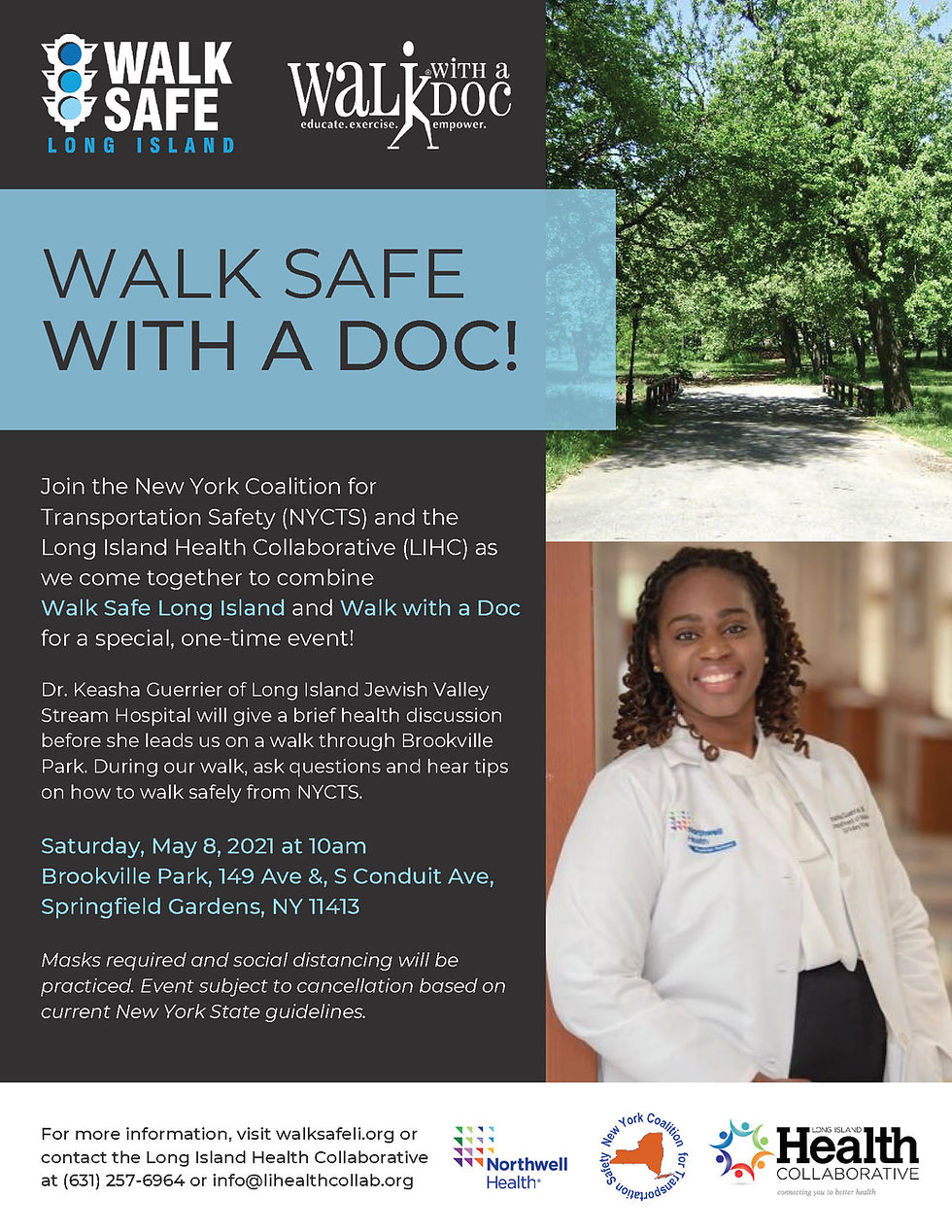"Eleven high-crash outer borough corridors to see speed limits reduced; NYPD will also crack down on speeding NEW YORK—Mayor Bill de Blasio announced today that speed limits will be reduced on 45 miles of major streets with some the highest rates of crashes across Brooklyn, Queens, the Bronx, and Staten Island. The NYPD will conduct a weeklong pedestrian and cyclist safety enforcement blitz, across all 77 patrol precincts, to crack down on drivers who speed and fail to yield. The announcements kick off Streets Week!, a suite of transportation, traffic safety, and open space policy announcements to double down on the transformative Vision Zero initiative." #streetsweeknyc https://www1.nyc.gov/office-of-the-mayor/news/
NYCTS BLOG
- Lynne Margaret Brown
- Apr 19, 2021
- 1 min read
SAVE THE DATE! Walk Safe with a Doc:Saturday, May 8, 2021 at 10am
Brookville Park, 149 Ave &, S Conduit Ave, Springfield Gardens, NY 11413
Dr. Keasha Guerrier of Long Island Jewish Valley Stream Hospital will give a brief health discussion before she leads us on a walk through Brookville Park. During our walk, ask questions and hear tips on how to walk safely from NYCTS. Long Island Health Collaborative #LIHC and New York Coalition for Transportation Safety #NYCTS join together for this event. Please join us! #WalkWithADoc

- Lynne Margaret Brown
- Apr 10, 2021
- 1 min read
AAA Northeast - April is National Distracted Driving Awareness Month! As traffic begins to pick up across the country with increased vaccinations and decreased pandemic restrictions, please focus on the road ahead and not on your phone. Don’t drive intoxicated. Don’t drive intexicated. #StopDrivingDistracted
Check out the video PSA here:
